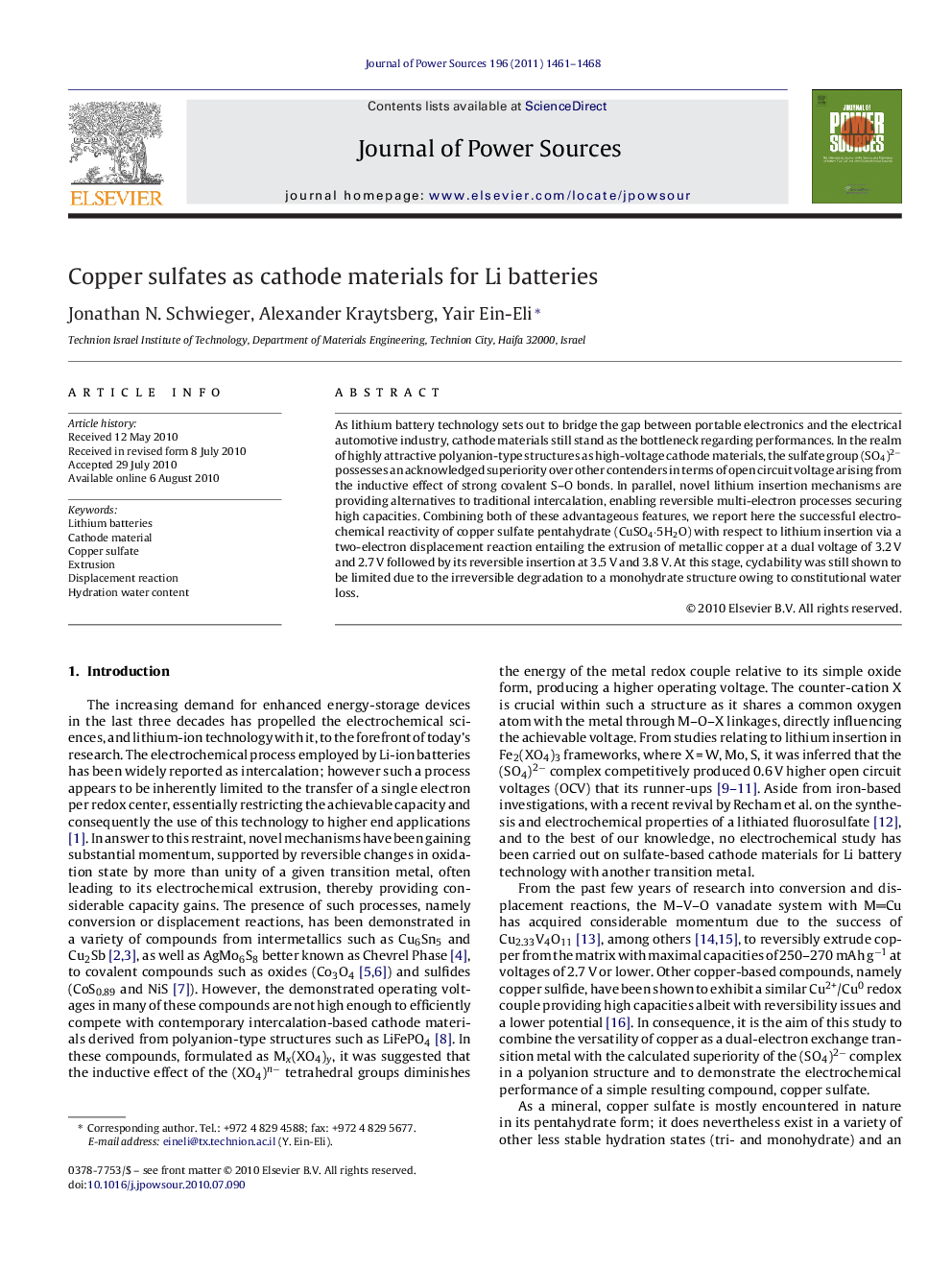| Article ID | Journal | Published Year | Pages | File Type |
|---|---|---|---|---|
| 1289647 | Journal of Power Sources | 2011 | 8 Pages |
As lithium battery technology sets out to bridge the gap between portable electronics and the electrical automotive industry, cathode materials still stand as the bottleneck regarding performances. In the realm of highly attractive polyanion-type structures as high-voltage cathode materials, the sulfate group (SO4)2− possesses an acknowledged superiority over other contenders in terms of open circuit voltage arising from the inductive effect of strong covalent S–O bonds. In parallel, novel lithium insertion mechanisms are providing alternatives to traditional intercalation, enabling reversible multi-electron processes securing high capacities. Combining both of these advantageous features, we report here the successful electrochemical reactivity of copper sulfate pentahydrate (CuSO4·5H2O) with respect to lithium insertion via a two-electron displacement reaction entailing the extrusion of metallic copper at a dual voltage of 3.2 V and 2.7 V followed by its reversible insertion at 3.5 V and 3.8 V. At this stage, cyclability was still shown to be limited due to the irreversible degradation to a monohydrate structure owing to constitutional water loss.
